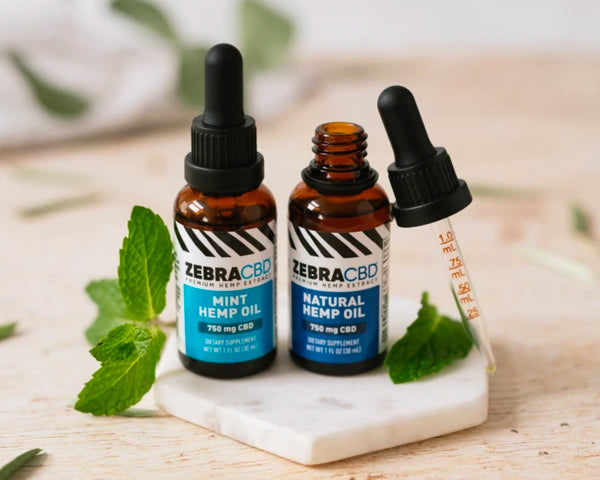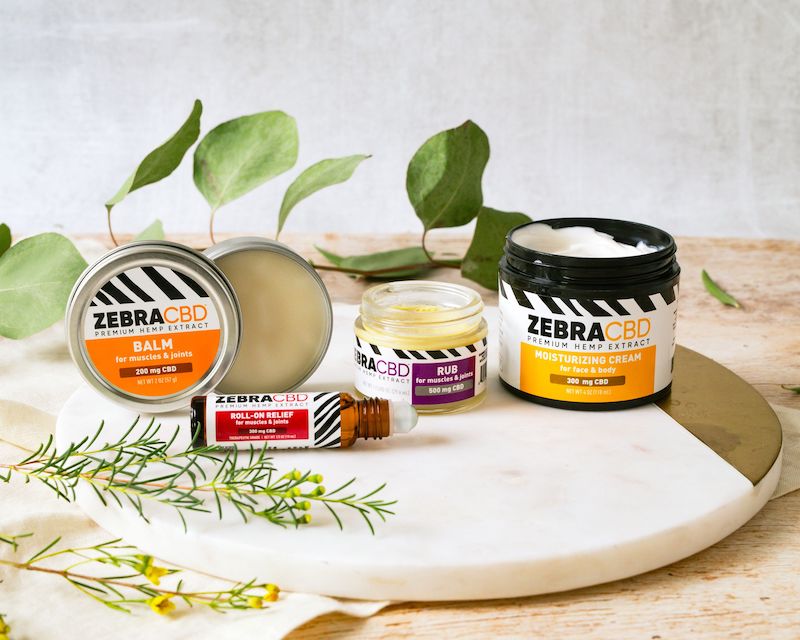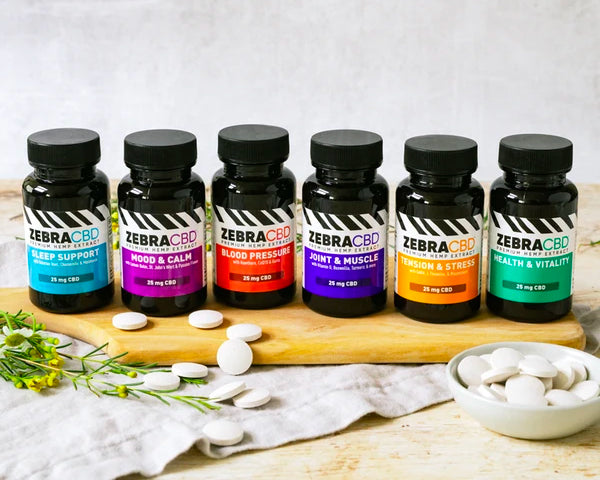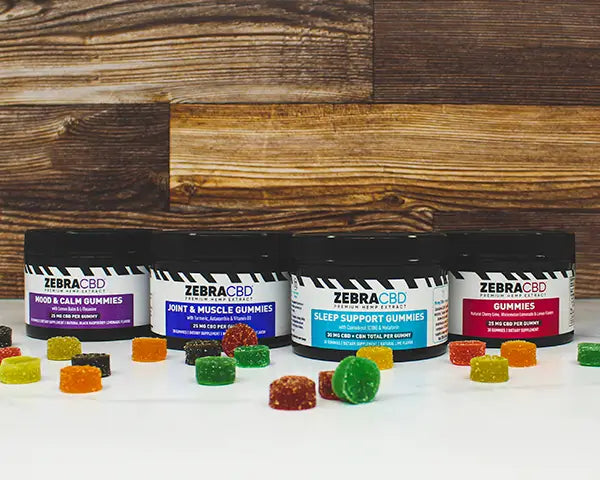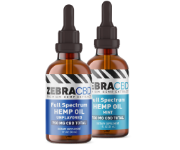
First, there was CBD tincture. Then, as CBD’s popularity increased, new products entered the market, including CBD gummies, hemp pills, CBD topicals and other edibles. What appealed to many consumers was CBD’s potential therapeutic properties — and lack of psychoactive properties.
In other words, you could experience the benefits of the cannabis plant without the mind-altering effects found in marijuana. The only issue? CBD has relatively low solubility and bioavailability, meaning it takes a while for the body to absorb its cannabinoid compounds and feel its effects.
Nano CBD is CBD that’s been broken up into tiny particles to improve its absorption rate and solubility.
Recently, however, researchers have developed CBD nanoparticles, which are high in CBD solubility, encapsulation efficiency and sustained CBD release. Nano CBD can also be conveniently administered through multiple methods, including bottled or canned water.
CBD 101
Cannabidiol (CBD) is an active ingredient found in the Cannabis sativa L. (hemp) plant. For centuries, hemp was the first isolated cannabinoid, which was used in textiles and food.
Then, in 1970, the United States government classified the cannabis plant, which included both marijuana and hemp, as a Schedule I controlled substance, meaning it was believed to have a high potential for abuse.
That all changed in 2018 after the government passed the Farm Bill. The legislation removed the hemp plant, and hemp-derived CBD, from the Controlled Substance Act, classifying it instead as a non-narcotic substance — as long as it contains no more than 0.3% THC.
Cue the boom of the CBD market. Through chemical synthesis, growers and manufacturers could purify hemp extracts to remove the presence of other cannabinoids, like THC, as well as terpenes and flavonoids, to curate pure hemp extract — as is the case with CBD isolate.
That said, other CBD types exist on the market, too. Full-spectrum CBD contains flavonoids, terpenes and many other cannabinoids, including trace amounts of THC. In effect, it’s believed that these components all work together synergistically to potentially deliver potent benefits.
Broad-spectrum CBD, on the other hand, contains no THC. Although, it still contains flavonoids and terpenes, which may help support the health of:
- The cardiovascular system
- The immune system
- The nervous system
When CBD enters the body, it’s believed to interact intimately with the body’s endocannabinoid system, which works to maintain homeostasis. It may also help activate serotonin receptors, which help to regulate mood and sleep by calming the body and mind.
It may also interact with TRPV1 receptors to help regulate body temperature and ease physical aches and soreness.
Here’s the Rub
Despite its potential benefits and uses, most CBD on the market has low bioavailability, water solubility and stability, which can affect its bioavailability and potency over time. When taken orally, a 2012 study found that its bioavailability was only 6%, compared to 31% when inhaled through smoking, vaping or dabbing.
Additionally, CBD (cannabidiol) has the potential to form solid particles or deposits within the gastrointestinal (GI) tract when consumed orally.
This is because, when CBD is ingested orally, it undergoes digestion and absorption in the GI tract. However, under certain conditions, CBD may not fully dissolve or be absorbed and can instead form solid precipitates or tiny particles within the digestive system. These precipitates can occur due to factors such as pH levels, interactions with other components of the digestive system, or the presence of certain food or medications.
The precipitation of CBD in the GI tract may impact its bioavailability, which refers to the amount and rate at which a substance is absorbed into the bloodstream and becomes available for the body to utilize. Furthermore, CBD has a greater tendency to dissolve in non-polar solvents (like oils) rather than polar solvents (like water), which makes it difficult for it to enter our bodies, which are 60% water.
CBD is also often unstable in acidic environments like the stomach, further hindering its absorption rate.
Consequently, researchers have developed nano CBD to increase CBD’s bioavailability and solubility, as they have previously done with Class II drugs.
What Is Nano CBD?
Essentially, nano CBD is CBD that’s been broken up into tiny particles to improve its absorption rate and solubility. But it’s a lot more complex than that.
Using nanotechnology, CBD can be broken down into particles that are 10-100 nanometers in size. To put it into perspective, a nanometer is one-billionth of a meter. Nano CBD is available in a variety of products, including:
- Beverages
- Capsules
- Oils
- Edibles
Researchers use two nano drug delivery systems when manufacturing nano CBD: Nanosuspensions and nanovectors:
- Nanosuspensions – These formations have been found to improve the solubility, permeability and bioavailability of CBD particles when consumed orally. Essentially, CBD particles are dispersed at the nanoscale within a liquid. They’re also relatively easy to prepare, making it a cost-effective manufacturing process.
- Nanovectors – Like nanosuspensions, nanovectors have a large surface area to volume ratio. In other words, there’s a lot of room for nano-sized CBD particles to interact with cells and tissues, thus improving their effectiveness. Nanovectors can also encapsulate nano CBD particles, which allows for controlled release within the body and potentially improved therapeutic effects.
Other studies have combined nano CBD particles with whey protein nanoparticles, which also increased the solubility of CBD. The whey particles also protected the CBD against degradation from UV light and heat.
Additionally, scientists are developing nano CBD for nasal administration, as well. More specifically, nanostructured lipid carriers for CBD encapsulate the cannabinoid effectively and allow the CBD to adhere to mucous membranes to facilitate more targeted delivery.
Now, let’s sum it all up. Essentially nano CBD can:
- Offer increased bioavailability – The smaller particle size allows for better absorption and more efficient delivery of CBD into the bloodstream, resulting in enhanced therapeutic effects.
- Easily mix into liquids and beverages – The nano-sized particles disperse evenly and homogeneously, ensuring that the CBD is uniformly distributed throughout the liquid. This characteristic makes it convenient for users to incorporate nano CBD into their preferred drinks, such as water, tea or smoothies, without any significant changes to taste or texture.
- Provide rapid results – The smaller CBD particle size allows for quicker absorption into the bloodstream, enabling the CBD to reach its target receptors more efficiently. This leads to faster onset of effects, allowing users to experience the potential benefits of more quickly after consumption.
The Potential Benefits of (Nano) CBD
While research is still ongoing, many individuals have reported positive experiences with CBD products. It's important to note that individual responses may vary, and further scientific investigation is needed to fully understand its effects. Nonetheless, here are some of the potential benefits associated with microdosing CBD:
- Relaxation and stress relief – CBD is most often touted for its ability to deliver full-body relaxation and alleviate feelings of stress and/or nervousness. That’s why many people incorporate CBD into their wellness routine to help them unwind after a long day and find a sense of calm among daily stressors and responsibilities. This is most likely related to CBD’s interaction with the body’s endocannabinoid system, which helps to maintain homeostasis.
- Promoting a sense of well-being – Overall, different types of CBD can help maintain a general sense of well-being and regulate overall moods, also likely due to CBD’s interaction with endocannabinoid and serotonin receptors. As a result, CBD users may experience improved moods, positive outlooks and mental wellness.
- Supporting healthy sleep patterns – For those who find it difficult to fall and stay asleep, CBD may be a helpful nighttime ally. Some research has shown that CBD may help regulate the sleep-wake cycle to ensure a more restful slumber.
- Encouraging exercise recovery – After a strenuous workout, our muscles can feel achy and sore, making it difficult to perform daily tasks or even sit down! Adding CBD to your workout routine may help to support muscle recovery and ease muscular tension post-workout.
- Enhancing skin health – Glowy skin may be that much closer with CBD. It’s believed that CBD can help maintain healthy-looking skin, particularly when applied topically to dry, red or irritated areas.
It's important to note that the FDA has not approved CBD as a treatment for any specific condition, and caution should be exercised when considering CBD products. Furthermore, it's crucial to consult with healthcare professionals and follow recommended guidelines when using CBD supplements or any other dietary supplement.
How to Find High-Quality CBD
Whether you’re shopping for nano CBD or regular CBD, it’s critical that you buy your products from a safe and trusted source. When researching companies, prioritize quality, transparency and adherence to federal guidelines.
First, you’ll want to ensure that the CBD products are tested by third-party laboratories. These laboratories will verify the potency, purity and safety of the products, as represented on the products’ labels. They’ll also confirm that products are free from harmful contaminants and high amounts of THC, usually through a Certificate of Analysis (COA), which you can typically find on the company’s website.
Also, choose CBD products that are derived from organically grown hemp. Organic farming practices can reduce the risk of exposure to harmful chemicals like pesticides and herbicides.
Get Your Hands On High-Quality CBD With Zebra CBD
Nanotechnologies are evolving the way in which we consume CBD. By decreasing the size of CBD particles, these technologies allow CBD to be more bioavailable to humans, effectively improving the cannabinoid’s effects throughout the body.
While we haven’t yet hopped on the nano CBD train, our CBD online products at Zebra CBD are established in high standards of quality, safety and transparency. All of our products undergo third-party testing and are crafted with high-quality, organic hemp extract. From CBD gummies to CBD topicals, we have what you need to feel your very best.
Source:
Molecules. Promising Nanocarriers to Enhance Solubility and Bioavailability of Cannabidiol for a Plethora of Therapeutic Opportunities. https://www.ncbi.nlm.nih.gov/pmc/articles/PMC9502382/
Dallas News. Nano CBD in 2023: Top 4 CBD Products for Enhanced Health & Wellness. https://www.dallasnews.com/branded-content/2023/05/25/nano-cbd-in-2023-top-4-cbd-products-for-enhanced-health-wellness/
Boston Magazine. Nano CBD: 5 Innovative Hemp-Derived CBD Products. https://www.bostonmagazine.com/sponsor-content/nano-cbd-5-innovative-hemp-derived-cbd-products/
CBD Oil Review. What is Nano CBD? https://cbdoilreview.org/cbd-cannabidiol/what-is-nano-cbd-your-questions-answered/

